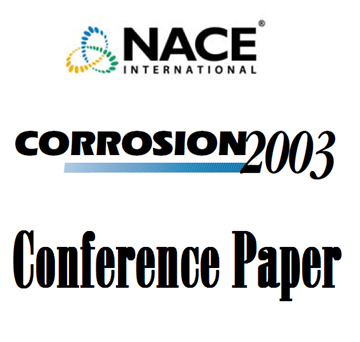Search
03074 EFFECTS OF GAS ATMOSPHERE AND SURFACE QUALITY ON ROUGING OF THREE STAINLESS STEELS IN WFI
Also Purchased
07193 Rouging of Stainless Steel in WFI Systems - Examples and Present Understanding
Product Number:
51300-07193-SG
ISBN:
07193 2007 CP
Publication Date:
2007
$20.00
03066 Design of Pilot Scale Once Through and Evaporative Cooling Water System Simulators
Product Number:
51300-03066-SG
ISBN:
03066 2003 CP
Publication Date:
2003
$20.00
03075 Real World Experiences with a New Cooling Water Automation System
Product Number:
51300-03075-SG
ISBN:
03075 2003 CP
$20.00




